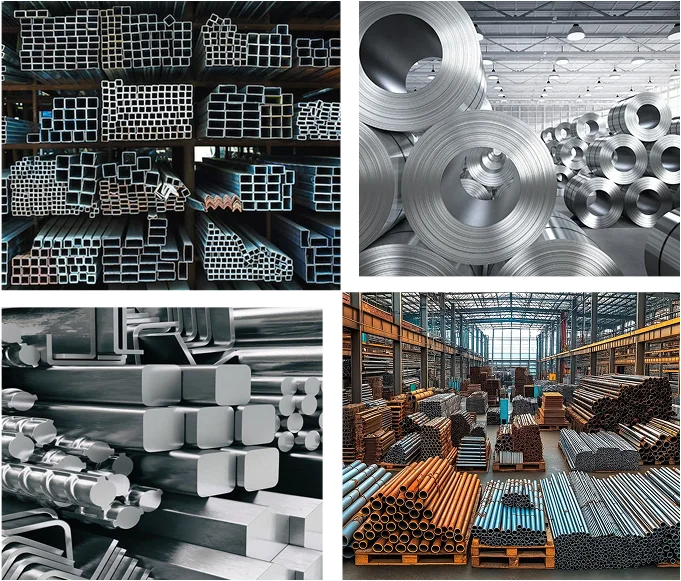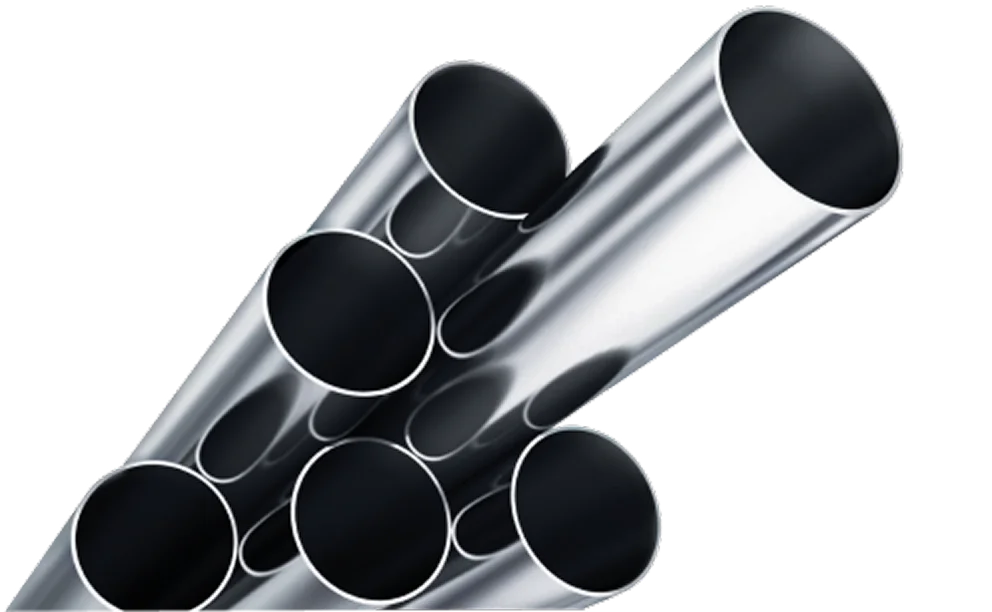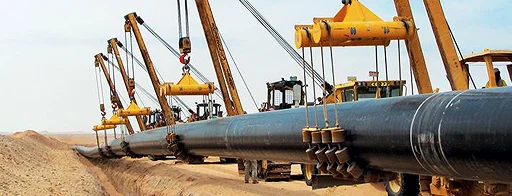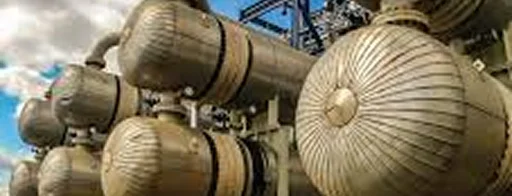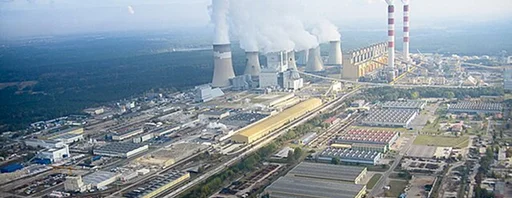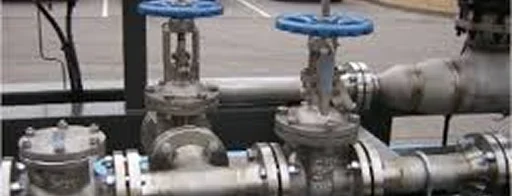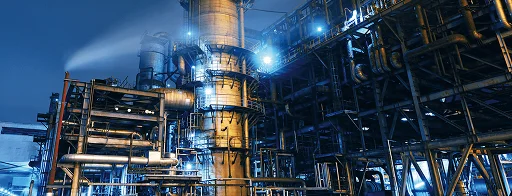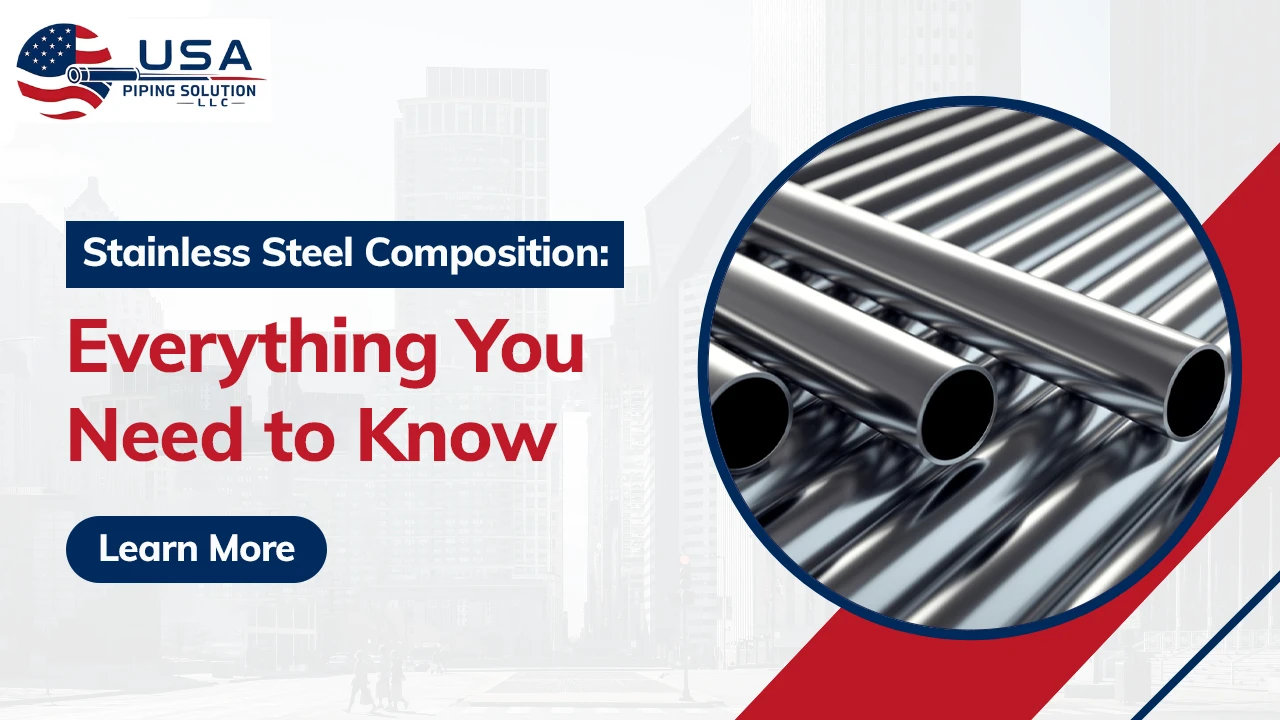
Stainless steel is an iron-based alloy that is known for its strength and rust resistance. Stainless steel contains chromium, which generally is 10.5 percent or more and it forms a protective oxide: surface layer. Chromium is an element that resists oxidation or rust. In addition to chromium, stainless steel may also contain other elements like nickel, molybdenum, and carbon to enhance the strength and toughness and workability. It is beneficial to know what the individual grades of stainless steel consist of in order to select the best grade for any application.
What is Stainless Steel Composition
The major elements in stainless steel are iron and chromium. The quantity of chromium is 10.5 percent or greater. Stainless steel grades typically consist of 50 - 75 percent iron and 16 - 30 percent chromium. Stainless steel grades may also have some combinations of elements such as nickel, molybdenum, and carbon, but in lesser amounts. For example, 304 stainless steel contains about 18 percent chromium and 8 percent nickel. 316 grade contains 2 - 3 percent of molybdenum, an element better used for corrosion properties. Each of the elements act together and form unique grades of stainless steel.
Stainless Steel Composition: What You Have to Know
Stainless steel is an iron-based alloy that is found in most everyday items like appliances, cookware, buildings, tools, and instruments. Due to its high tensile strength and resistance to rust, it is popularly used as a composition alloy. Stainless steel has a minimum of 10.5 percent chromium content which forms an oxide: surface layer which protects the material. But what is chromium? It is a resistive element from oxidation or rusting. Elements used in stainless steel also include; nickel, molybdenum, and carbon to aid strength and toughness and workability.
To select the appropriate grade for an application, it is important to understand what the individual grades consist of.
What are the Elements of Stainless Steel?
The predominant elements in stainless steel are iron and chromium. The quantity of chromium is 10.5 percent or greater. The grades of stainless steel also have a minimum, which is generally, 50 - 75 percent iron and 16 - 30 percent chromium. Other elements have been used to make stainless steel more productive in different ways, including combined amounts of nickel, molybdenum, and carbon. For example; 304 grade stainless has 18 percent chromium and 8 percent nickel. 316 grade has 2 - 3 percent of molybdenum, which is an element designed for corrosion properties. All of these elements work together as steel all possess different combinations, each forming various grades of stainless steel.
Why Composition Matters in Stainless Steel
The performance of stainless steel is directly proportionate to what it is made of. Use the wrong steel for a certain situation and it can fail far too soon, become unsafe and cause increased costs. For example type 304 with a chromium percentage of 18 and nickel of 8 is not suitable in salt water (or in areas rich in chloride). In these situations type 316 or 316L with molybdenum is preferred due to its increased corrosion resistance. To make things even more complicated, if the wrong duplex grade was used in a high-pressure offshore application, it could also lead to increased susceptibility to stress corrosion cracking.
Stainless Steel performance is based on the material it is made from. There are many different types of stainless steel to choose from but, if the incorrect steel is selected for an application, the end result could be premature failure, unsafe condition, or additional expenses. For example, type 304, which has 18% chromium and 8% nickel, is not designed for saltwater vegetation (or chlorides). In this case, the design should have specified either 316 or 316L, which contains molybdenum and is used because it is more resistant to corrosive conditions. To complicate matters, if the incorrect duplex material was used in a high pressure offshore application; there is greater risk to stress corrosion cracking.
The Main Components of Stainless Steel
The performance, durability, and application versatility of stainless steel are defined by its chemical composition. While chromium is the essential element that distinguishes stainless steel from other steels, the combination of several alloying elements determines how it behaves in real-world industrial environments. Each element has a specific function—enhancing corrosion resistance, improving strength, or making the material easier to fabricate.
Let’s break down the primary elements that make up stainless steel:
Chromium
Chromium is the cornerstone of stainless steel. It’s the element that gives the alloy its characteristic “stainless” property. A minimum of 10.5% chromium is required in the composition for the material to qualify as stainless steel. When exposed to oxygen, chromium reacts to form a passive chromium oxide film on the steel’s surface. This invisible layer is self-healing and protects the underlying metal from rust and corrosion—even when scratched or damaged.
- Function: Provides corrosion and oxidation resistance
- Typical Range: 10.5% – 26%
- Found In: All grades (notably 304, 316, 430)
- Use Case: Ideal for marine, chemical, and outdoor applications where exposure to moisture or corrosive environments is frequent
Nickel
Nickel plays a critical role in stabilizing the austenitic structure of stainless steel, especially in grades like 304 and 316. Its addition enhances toughness, ductility, and formability, making the steel suitable for deep drawing and bending processes. It also helps improve resistance to certain acidic and alkaline environments. Higher nickel content is often used in alloys designed for cryogenic or high-temperature applications.
- Function: Improves ductility, corrosion resistance, and weldability
- Typical Range: 0% – 35%
- Found In: Austenitic grades (304, 316, 310)
- Use Case: Chemical tanks, pressure vessels, piping systems in harsh environments
Iron
Iron is the fundamental base metal in all stainless steels. Most stainless steels contain over 50% iron, and the remaining composition is adjusted depending on the required properties. It serves as the structural framework that binds all other alloying elements. While it may not directly influence corrosion resistance, it plays a key role in overall strength and machinability.
- Function: Structural base of stainless steel
- Typical Range: Balance (often 50% or more)
- Found In: All grades of stainless steel
- Use Case: Forms the base for alloying in both low- and high-performance applications
Carbon, Molybdenum, and Other Elements
Carbon (C) : Carbon is a strengthening element, but in stainless steel, it's usually kept at low levels (typically under 0.08%) to avoid carbide precipitation, which can cause intergranular corrosion. However, in martensitic grades like 410 or 420, higher carbon levels are used to enable heat treatment and hardening.
- Function: Increases hardness and strength (when controlled)
- Typical Range: <0.08% in most, up to 1% in high-hardness grades
Molybdenum (Mo) : Molybdenum boosts pitting and crevice corrosion resistance, especially in chloride-rich environments like seawater. It’s a key addition in grades like 316 and duplex 2205.
- Function: Enhances corrosion resistance and high-temperature strength
- Typical Range: 2% – 3% in common grades, higher in specialized alloys
Manganese (Mn) : Used as a deoxidizer and sometimes as a partial substitute for nickel in low-cost stainless steels, manganese also improves strength and wear resistance.
- Function: Aids deoxidation, improves strength
- Typical Range: Up to 7% in some austenitic grades
Silicon (Si) : Silicon serves as a deoxidizing agent and contributes to oxidation resistance, especially at elevated temperatures. It also enhances scale resistance in high-heat environments.
- Function: Oxidation resistance, deoxidizing agent
- Typical Range: 0.2% – 1.0%
Nitrogen (N) : A small yet powerful addition, nitrogen increases tensile strength and enhances pitting resistance. It is particularly effective in duplex and high-performance austenitic steels.
- Function: Strengthens austenitic matrix, improves pitting resistance
- Typical Range: Up to 0.2%
Stainless Steel Chemical Composition
|
Element |
Fe |
Cr |
Ni |
Mo |
C |
Mn |
Si |
N |
P |
S |
|---|---|---|---|---|---|---|---|---|---|---|
|
Composition (%) |
50–72 |
16–30 |
8–10.5 |
2–3 |
0.03–0.08 |
1–2 |
0.5–1 |
Up to 0.10 |
≤ 0.045 |
≤ 0.03 |
How Stainless Steel Composition Affects Its Properties
The composition of stainless steel plays a defining role in determining its mechanical strength, corrosion resistance, ductility, and ability to withstand heat. Each element in the alloy contributes uniquely to these characteristics. For instance, chromium forms a protective oxide layer on the surface that guards against rust and oxidation, while nickel enhances toughness and ductility, making the material suitable for deep drawing and bending. Molybdenum improves resistance to pitting and crevice corrosion, especially in chloride-rich environments like seawater or chemical processing plants. Carbon, when controlled in low amounts, maintains ductility and weldability, but in higher concentrations—such as in martensitic grades—it allows for hardening through heat treatment. Elements like nitrogen and manganese add strength and improve overall structural integrity. Collectively, these elements influence how stainless steel behaves under stress, reacts to harsh chemicals, and performs at elevated or cryogenic temperatures. That’s why understanding stainless steel composition is crucial for selecting the right grade in industries like oil & gas, petrochemicals, defense, and power generation—where performance and reliability are non-negotiable.
Strength, Hardness & Ductility
Strength, hardness, and ductility in stainless steel are closely linked and largely influenced by the presence of carbon, nickel, manganese, and nitrogen. Carbon enhances hardness and tensile strength, particularly in martensitic grades like 410 and 420, though it must be carefully controlled to avoid brittleness. Nickel boosts ductility and toughness, making high-nickel austenitic steels such as 304 and 316 ideal for forming and fabrication. Manganese supports strength and work-hardening, especially in cost-effective, low-nickel grades like 201. Even in small amounts, nitrogen significantly increases yield strength and mechanical durability, particularly in duplex stainless steels like 2205.
Corrosion Resistance & Heat Tolerance
Corrosion resistance and heat tolerance are two of the most critical properties of stainless steel, largely determined by its chromium, molybdenum, and nickel content. Chromium (minimum 10.5%) creates a self-healing oxide layer that protects the steel from rust, while higher concentrations offer even greater resistance in harsh, oxidizing environments. Molybdenum enhances durability in chloride-rich conditions like seawater, preventing pitting and helping the steel retain strength at high temperatures. Nickel improves resistance to acidic environments and ensures reliable performance in both cryogenic and elevated temperatures. Grades like 316, with added molybdenum, offer superior corrosion resistance compared to 304, especially in marine or chemical settings. Duplex steels like 2205 combine strength with excellent thermal and corrosion resistance. Depending on the grade, stainless steel can withstand temperatures up to 925°C without losing structural integrity.
Types of Stainless Steel Based on Composition
Austenitic grades of stainless steel such as 304 and 316 are non-magnetic and very ductile. They contain a range 16 to 26% chromium and have 6 to 20% nickel. For example, grade 304 is comprised of approximately 18% nickel and 8% nickel. Grade 316 has 2-3% molybdenum which allows it to perform better in marine and chemical environments.
Ferritic types such as 409 and 430 are magnetic and are much cheaper than the austenitic types. They range from 11 to 18% chromium and have little or no to low nickel content. To give an example, grade 430 is approximately 16 to 18% chromium and is typically used in auto parts and appliances.
Martensitic grades such as 410 and 420 can be heat treated to harden the stainless steel. These stainless steels contain 11% to 18% chromium and have higher carbon content. Martensitic grades are used in blades, valves, and wear-resistant parts.
Duplex grades such as 2205 and 2507 are a combination of austenitic and ferritic material. They generally consist of approximately 22 percent chromium, 5 to 6 percent nickel, 3 percent molybdenum and approximately 0.14 percent nitrogen. They are corrosion resistant, strong, and generally suitable for offshore rigs, desalination plants, and chemical processing.
Popular Stainless Grades and Their Composition
Stainless steel grades vary widely in their chemical makeup, and these differences significantly impact their performance in industrial settings. From corrosion resistance and strength to machinability and cost, each grade offers a unique set of advantages based on its alloying elements. Whether you’re choosing material for heat exchangers, marine pipelines, food equipment, or refinery vessels, understanding the composition of popular stainless grades is essential for making informed decisions.
Here's a clear comparison of the most commonly used stainless steel grades and their typical chemical composition:
Stainless Steel Composition Table by Grade
|
Grade |
Chromium (Cr) |
Nickel (Ni) |
Molybdenum (Mo) |
Carbon (C) |
Manganese (Mn) |
Nitrogen (N) |
Key Properties |
|---|---|---|---|---|---|---|---|
|
304 |
18.0–20.0% |
8.0–10.5% |
— |
≤ 0.08% |
≤ 2.0% |
— |
Excellent corrosion resistance, highly formable |
|
316 |
16.0–18.0% |
10.0–14.0% |
2.0–3.0% |
≤ 0.08% |
≤ 2.0% |
— |
Superior resistance to chlorides and acids |
|
430 |
16.0–18.0% |
≤ 0.75% |
— |
≤ 0.12% |
≤ 1.0% |
— |
Magnetic, economical, decent corrosion resistance |
|
410 |
11.5–13.5% |
≤ 0.75% |
— |
0.08–0.15% |
≤ 1.0% |
— |
Heat-treatable, high strength, wear resistant |
|
2205 |
21.0–23.0% |
4.5–6.5% |
2.5–3.5% |
≤ 0.03% |
≤ 2.0% |
0.14–0.20% |
Duplex structure, high strength, pitting resistance |
Summary of Popular Grades:
- 304 Stainless Steel: The most widely used grade due to its excellent formability and corrosion resistance in non-chloride environments.
- 316 Stainless Steel: Enhanced with molybdenum for better performance in marine, pharmaceutical, and chemical applications.
- 430 Stainless Steel: A ferritic, nickel-free option that offers decent corrosion resistance and magnetic properties at a lower cost.
- 410 Stainless Steel: A martensitic stainless steel suitable for applications needing strength and moderate corrosion resistance; often heat-treated.
- 2205 Duplex Stainless Steel: A high-performance duplex grade with a balanced microstructure that provides exceptional strength and resistance to stress corrosion cracking.
Understanding these compositions allows engineers, specifiers, and procurement teams to align material selection with operational needs—whether it’s enduring extreme temperatures, resisting chemical exposure, or maximizing structural integrity in offshore environments.
Importance of Understanding Stainless Steel Composition in Industry
In all industries, understanding the makeup of stainless steel is necessary for safety performance and cost savings. For corrosion resistance, stainless steel with higher amounts of chromium and molybdenum prove more useful in environments that are chemically marine or acid-based. Achieving the right ratio of Cr and Mo protects against failers and extends life. For heat resistance, grades such as 310 and 446 that are rich in chromium and nickel are useful for the most extreme heat applications. Even stainless steels with silicon and molybdenum improves strength and oxidation resistance when heat is a factor. Whether a product is fabricated or welded depends on the alloy content. Nickel rich grades (like 304 and 316) will be easier to weld and work with. The low carbon 304L and 316L grades will not corrode after welding. The ferritic and martensitic grades are more difficult to work with and welded. Alloys with nitrogen and titanium are easier to work with, improve the weld, and improve the structure.
Choosing the Right Stainless Steel Composition
Selecting the appropriate stainless steel means matching the alloy mix to the specific requirements of the application. Corrosion temp stress, how the product is fabricated, etc. It matters. Grade 316 is often used in marine application because of it's molybdenum content, while grade 304 is suitable for indoor application. Duplex 2205 is great when you need to achieve strength and corrosion resistance. By understanding how composition influences performance and cost, engineers can avoid over and under specifying.
Frequently Asked Questions (FAQs)
What elements make stainless steel stainless?
Chromium in the amount of 10.5 percent or more forms a passive oxide layer that protects the corrosion of the surface. Nickel, molybdenum, and carbon increase strength, and reduce rust.
Why is nickel added to stainless steel?
Nickel stabilizes the austenite, increases strength and ductility, and increases resistance to acids and in cold temperatures.
How does molybdenum affect stainless steel?
Molybdenum increases the resistance to pitting and crevice corrosion, particularly in marine and chemical environments. Molybdenum also helps maintain strength at high temperatures.
Why is 304 stainless steel not ideal for marine use?
304 does not have molybdenum which is why while in salty environments pitting will occur, grades like 316 or duplex are better options.
How does carbon content influence a stainless alloy?
More carbon makes the steel harder but also less corrosion resistant. Lower carbon grades like 304L and 316L are better choices for welded applications.
